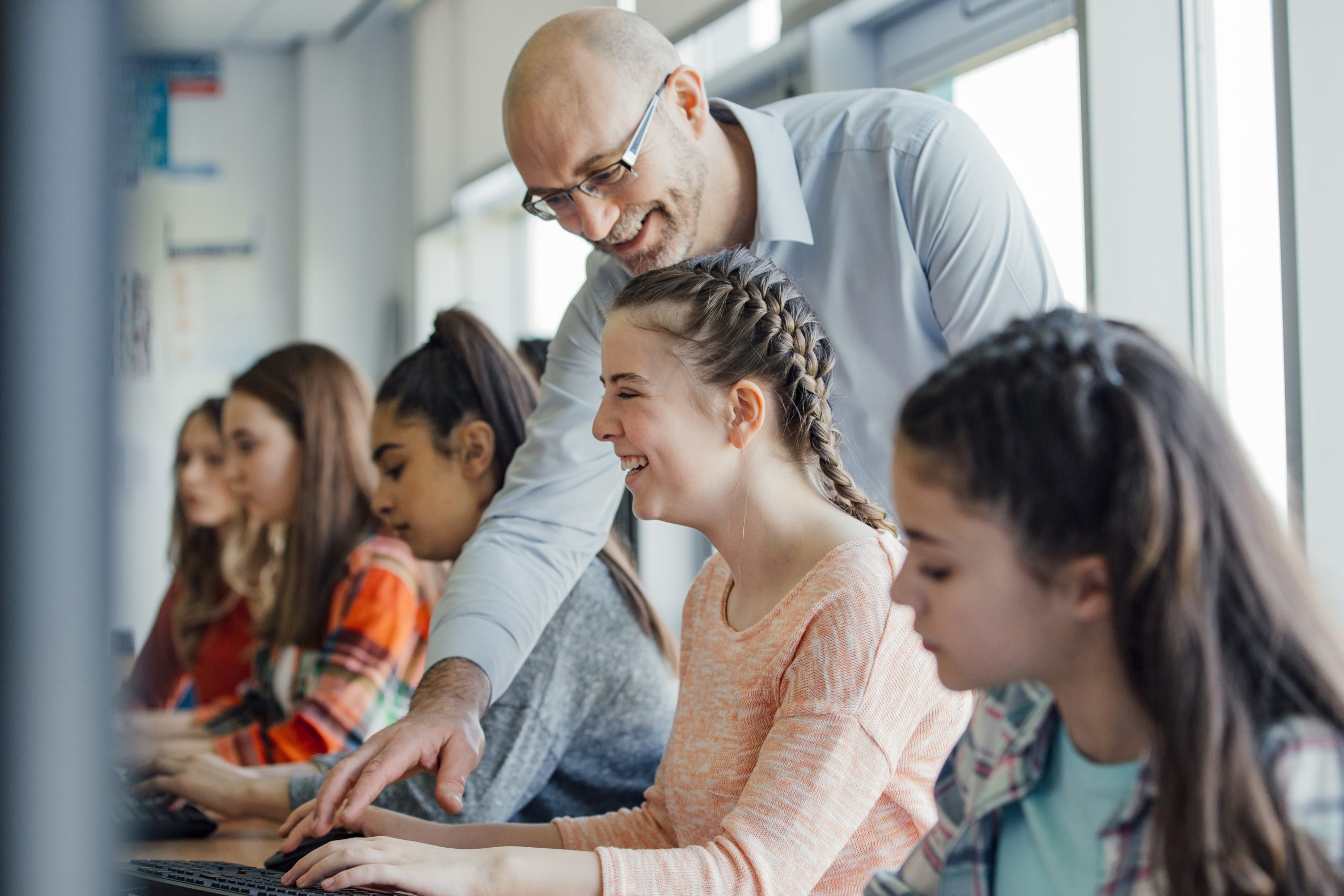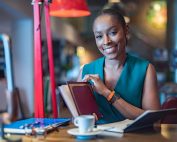
As a new teacher, it may seem daunting to navigate learning curriculum, planning and delivering instruction, and attending to students’ social-emotional needs and development. The development of building strong student relationships with and among your students helps to set the stage for success.
The Importance of Strong Relationships
When I first started teaching, I joined a fourth grade classroom in Virginia mid-year. The previous teacher, for reasons of her own, had left the classroom.
These kids had just lost their teacher. The school was out of compliance with the state in terms of test scores and, on a weekly basis, staff from the State Department of Education visited classrooms. It was a high-pressure environment for both students and teachers.
As a new teacher, I could have completely lost control of the classroom; there were several children in the class who were far above grade level in all subjects and needed significant enrichment. There were also children who needed extra support and services and were far below grade level in reading and math. All of these variables presented a challenging situation for a brand-new teacher starting a position mid-year.
However, I was determined that my students and I would have a successful school year. The most important and impactful part of our success was my goal to develop strong relationships with and among my students. Many needed a person to trust, a safe place. My absolute first priority was to provide that for them so they could then, in turn, focus on learning. Above all, I wanted them to feel that their classroom was a community that would always be there for them and that they could turn to me if they needed support, either academically or in their lives outside of school. I aimed to meet their foundational needs first. This way we could build upon these together for learning and social-emotional development.
Strategies to Develop Strong Connections With Your Students
There are a few tried and true strategies to connect with your students. Even as a new teacher who is navigating the classroom for the first time, building connections with your students sets the foundation for a positive classroom environment conducive to learning. As Maslow’s Hierarchy of Needs outlines, basic and psychological needs are the basis for creativity, growth, and reflection.

1. Listen
Children of all ages often look for ways to share about their lives. It may not be obvious; they may mention an event that has impacted them, whether negatively or positively. Often this happens at the most random times! For example, there were plenty of times that one of my students would come chat with or confide in me at recess. This is often a time when students feel free to approach the important adults in their lives. They are outside, in the fresh air, with fewer constraints. They feel comfortable sharing with a trusted adult – that’s you!
It may sometimes be hard to focus on what a student is telling you. You may be monitoring and supporting the rest of your students. However, if a student approaches you to share something, it’s important to listen to them. You can also ask them to wait just a few minutes until you can give them your undivided attention. Making this connection can make a huge difference in not only your relationship with your students but also in your students’ own confidence, self-esteem, and trust.
2. Ask Questions
Some children may naturally offer information about their lives and their feelings without anyone asking. However, some children are more hesitant to share information and feelings about their lives outside or in school. In either case, children do appreciate trusted adults taking an interest in their lives. To learn more about your students, ask questions! Does one student play soccer? Does another love Harry Potter movies? Maybe another plays piano? Ask students questions about themselves to learn about them as a person and foster relationships. Even if you don’t participate in these activities, learning more about your students as whole people helps to build connection. These attributes are crucial to developing a connected classroom community.
3. Connect with Family and Guardians
Reaching out to students’ families, loved ones, and guardians helped me build strong student relationships. First, understand that not all students will come from a family structure that reflects yours. This is okay. Families come in many forms and they may not reflect our own backgrounds. However, those who are important to our students’ lives outside of school are an important connection to those students.
I now have two children in a public school system and I just received a survey about my oldest child. The survey included items such as, “What subjects does your child enjoy,” and “What subjects does your child struggle with?” It also asked about my child’s interests outside of school. As a parent, this was so heartening and important to me. It suggests that my child’s teacher cares and also appreciates my input as a parent into their education. Reaching out to your students’ loved ones and guardians is a great way to get insight into their lives, loves, and motivations.
4. Take Responsibility for Your Own Approach
Teaching is an incredibly rewarding, though challenging, profession. Some days I thought, “Am I giving my students everything they need?” Some days I wanted a break. Taking responsibility for over 20 students’ learning and development was a daunting task for a new teacher!
Even so, I found the energy I brought into my classroom each day directly impacted my students. If I was stressed, so were they. If I was excited about a lesson or school event, so were they. Your mindset affects your students and this can make or break a day in the classroom. Just as we teach our students, you should try to approach each day with a growth mindset. This doesn’t mean you are always perfect. It means that you are there to practice your craft, support your students, and learn along the way.
5. Build Classroom Community
Finally, building classroom community through the development of classroom norms is crucial. I had my students brainstorm a class motto that would guide the development of our norms. We then voted and chose our motto: “You Belong.” It may sound incredibly simple. However, we then also brainstormed what “belonging” means. This included situations such as participating in group work, seating arrangements, and school-based activities such as their annual play.
Through a whole-class discussion, we then identified our classroom norms. These are different than rules; they are meant to guide behavior, choices, and how we relate to others. They set the tone for classroom interactions and provide a way for the teacher to foster community. We all tried to make choices guided by these norms and held each other accountable to them.
Here are some examples of class norms:
- Speak to each other with kindness
- Respect others’ property and space
- Stand up to bullying and tell an adult
- Try your best
- Ask questions when you don’t understand
Developing these norms together with students gives them a sense of pride and responsibility to uphold them. I often noticed my students referring to these norms when they noticed a peer making poor choices. In this way, we created a sense of community through which we all held each other accountable and created a safe space for learning.
How I Learned These Strategies
I learned some of these strategies in my teacher preparation program. Some of these strategies I learned through experience in the classroom. Regardless, it was important for my school leadership and colleagues to trust that I could enter the classroom and finish the year strong with my students. One requirement that allows you to show mastery of the art and science of teaching is your certification exams.
Why are Certification Tests Important?
Most states across the country use certification tests to evaluate a teacher candidate’s understanding of both content and pedagogy. For example, Texas uses the TExES™ Pedagogy and Professional Responsibilities (160) test. This assesses whether a teacher candidate understands foundational elements of education and teaching such as developing classroom community, learning theory, and child development. Other states use National Evaluation Series™ (NES) tests. These include the Assessment of Professional Knowledge: Elementary (051) or Assessment of Professional Knowledge: Secondary (052) to evaluate pedagogical knowledge.
Passage Preparation™ Can Help you Prepare
These tests are often challenging. Sometimes it is difficult to translate what you’ve learned either through your preparation program or through classroom experience to answers on a high-stakes test. Passage Preparation™ courses help you review what you’ve learned. They prepare you to respond to your test items accurately and successfully. Our courses are developed by educators who have spent years in the classroom; this means they know their stuff! First, the content is in-depth and high-quality, with features such as Key Takeaways to help you recall important information on test day. Additionally, each course includes multiple ways to practice applying your mastery of the content to test questions. They include Checks for Understanding, opportunities to apply your knowledge outside of a multiple choice question or constructed response question.
Passage Preparation™ offers courses for over 120 certification tests used in states across the country, including:
- Praxis® Principles of Learning and Teaching: K-6 (5622)
- Praxis® Principles of Learning and Teaching: 5-9 (5623)
- Praxis® Principles of Learning and Teaching: 7-12 (5624)
- Praxis® Principles of Learning and Teaching: PreK-12 (5625)
- TExES™ Pedagogy and Professional Responsibilities (160)
- NES™ Assessment of Professional Knowledge: Elementary (051)
- NES™ Assessment of Professional Knowledge: Secondary (052)
- OAE Assessment of Professional Knowledge: 4-9 (002)
- OAE Assessment of Professional Knowledge: 7-12 (003)
- And many more!









